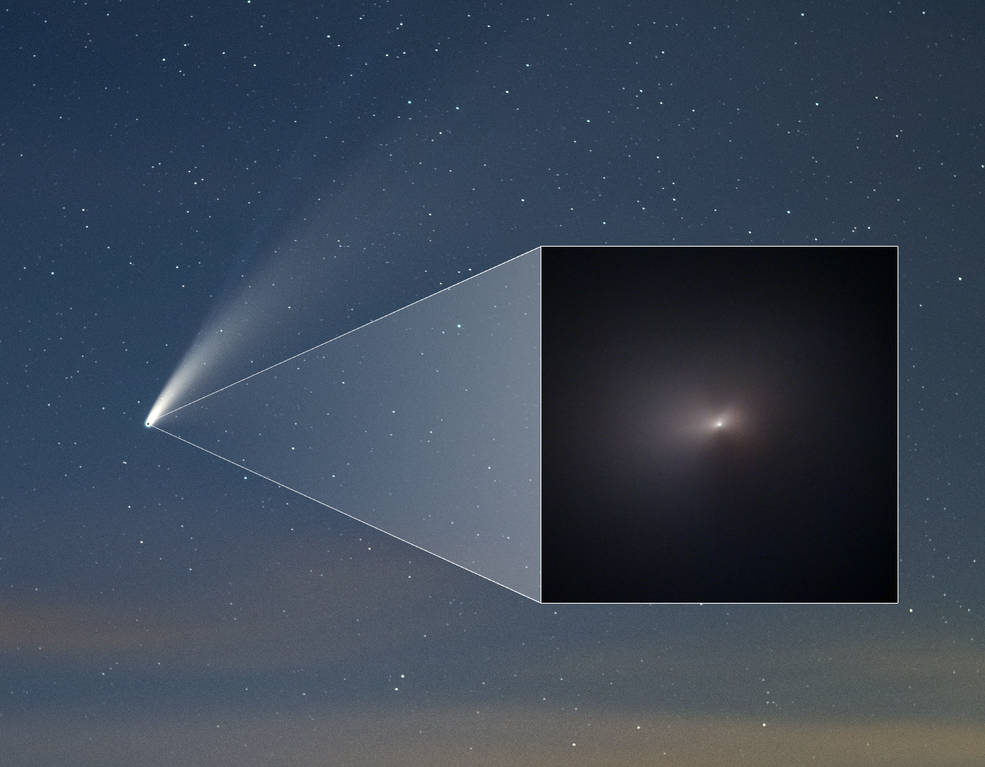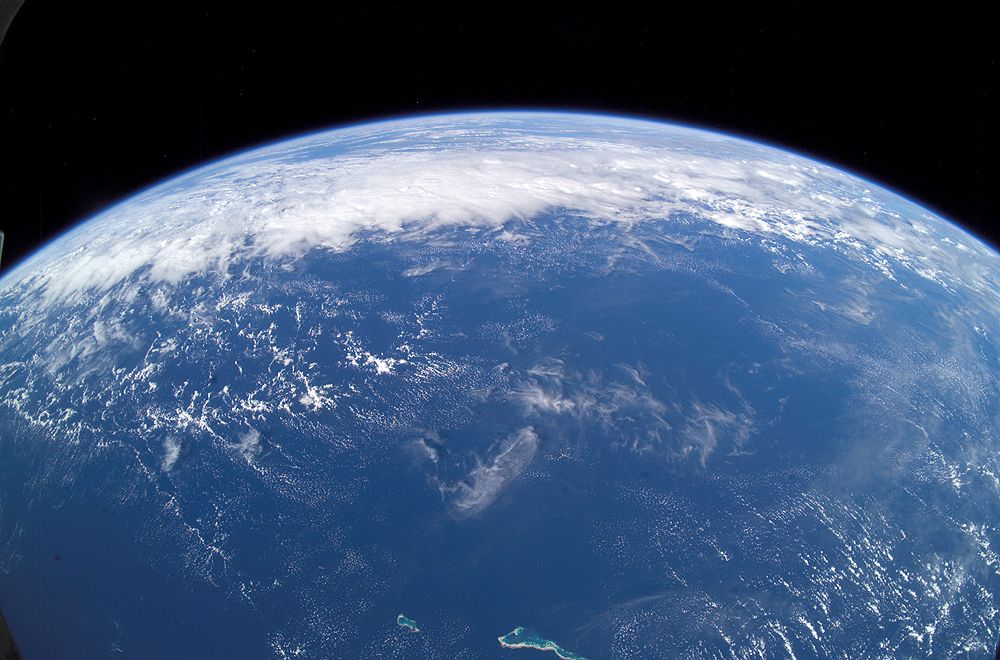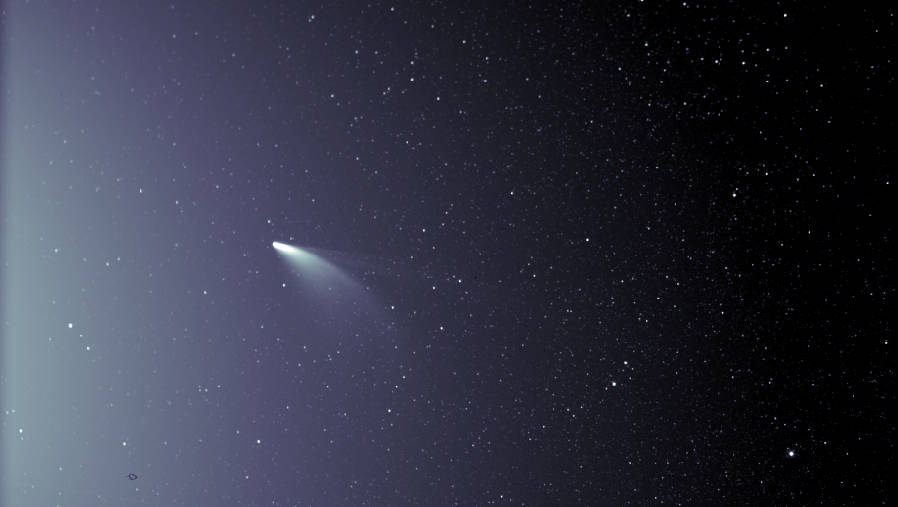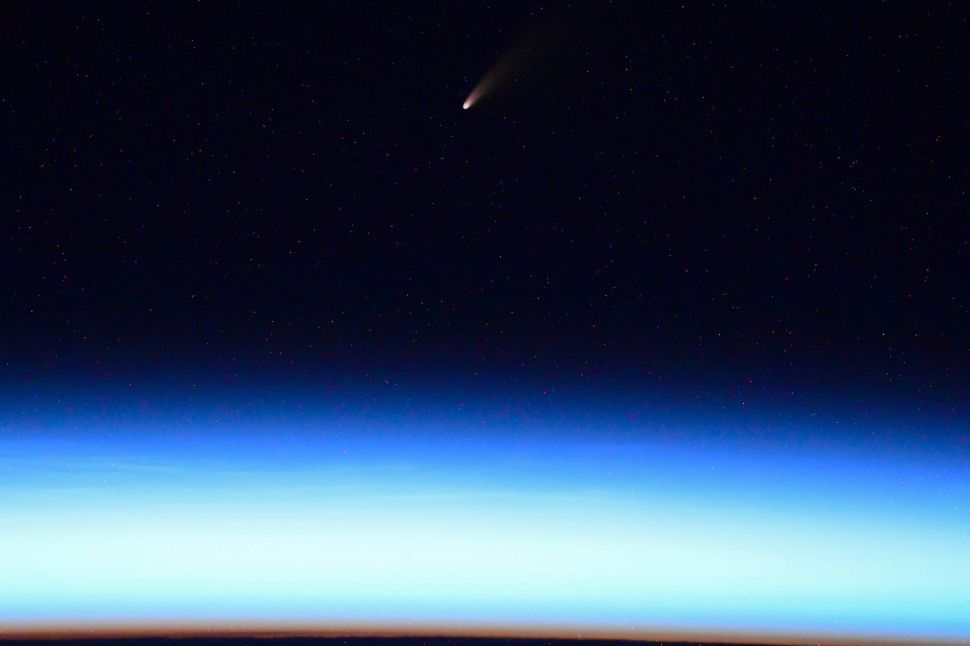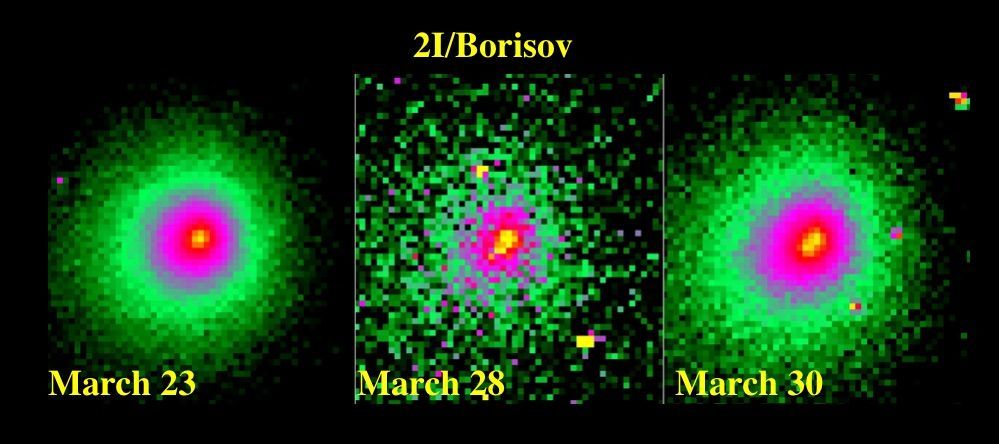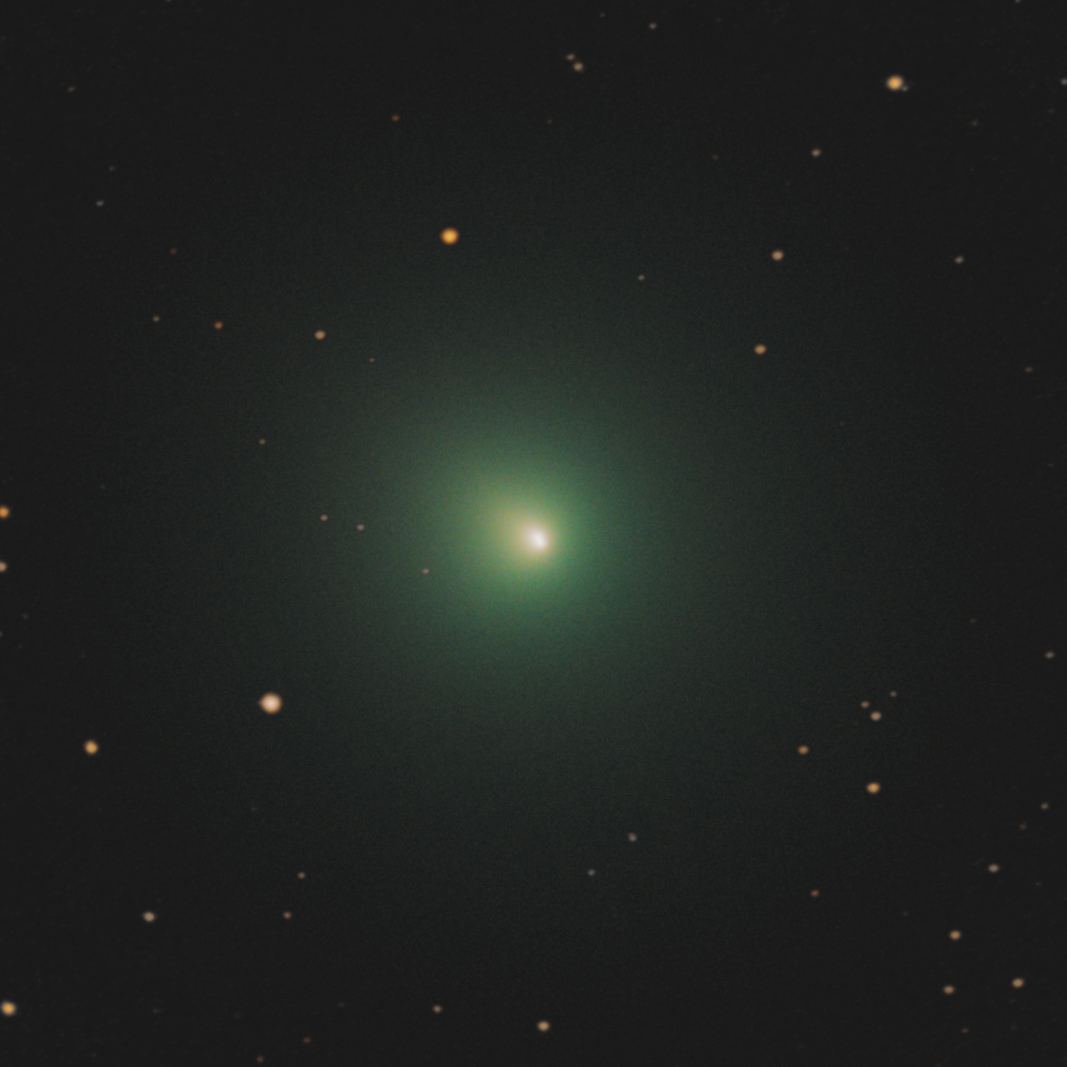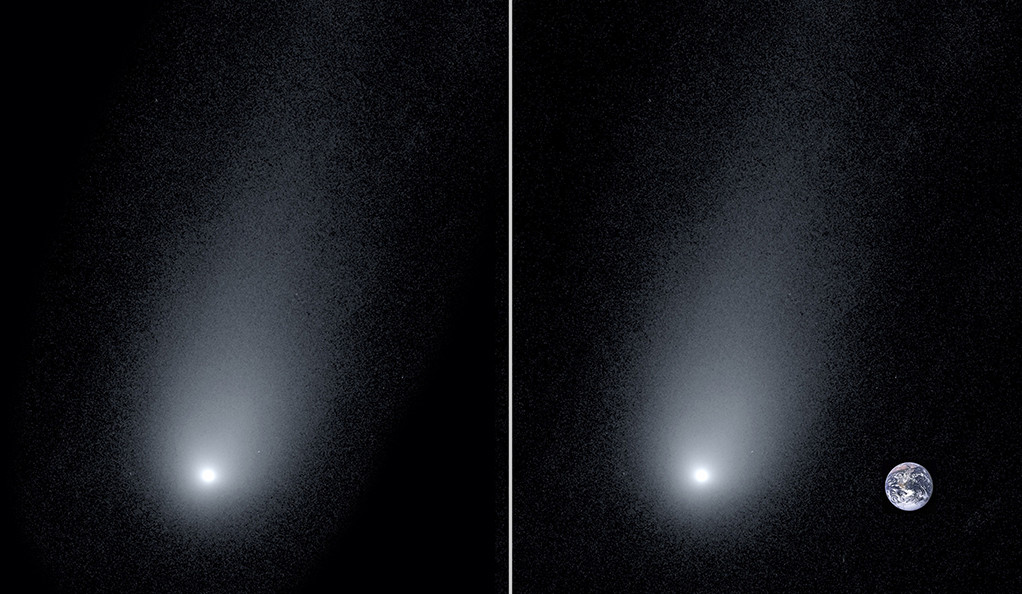This summer we were (finally) treated to a spectacular, naked-eye comet, C/2020 F3 NEOWISE. And while seeing it with our own eyes was a joy, it was incredible to see the varied photos of NEOWISE taken by people around the world, showing the comet’s long gossamer tails, filled with detail and color. (See our gallery of images here.)
Now, the Hubble Space Telescope has released a high-resolution image of NEOWISE. However, it might not be the view you may have expected.
Continue reading “Everyone Took Pictures of Comet NEOWISE, Including Hubble”
